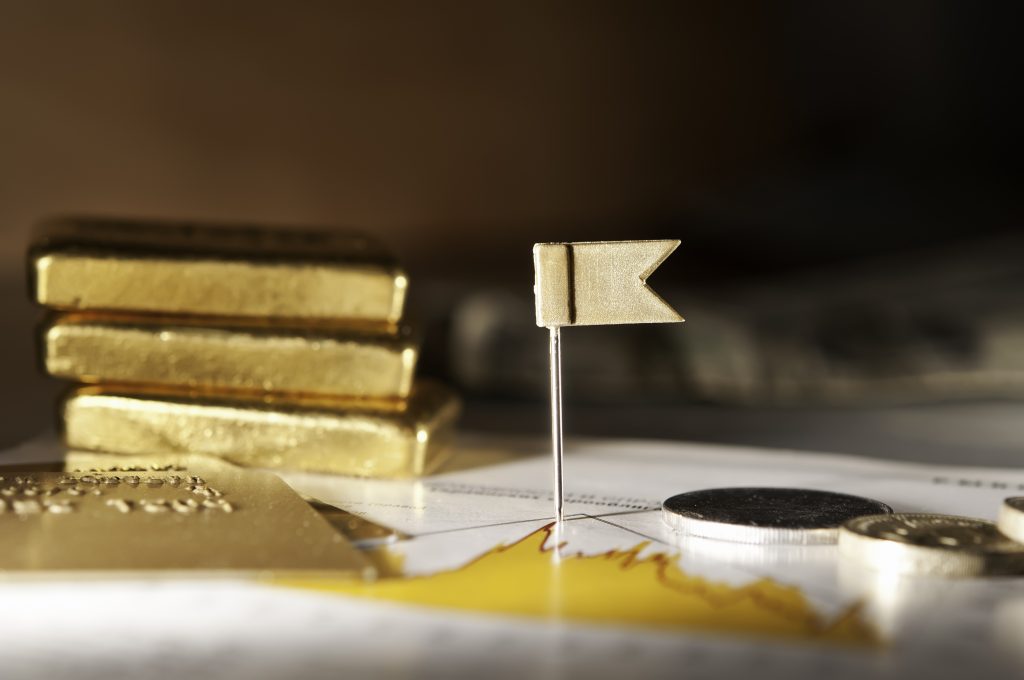
Gold
Gold is a chemical element with the symbol Au (from Latin aurum ‘gold’) and atomic number 79. It is a bright, slightly orange-yellow, dense, soft, malleable, and ductile metal in pure form. Chemically, gold is a transition metal and a group 11 element. It is one of the least reactive chemical elements and is solid under standard conditions.
Gold is resistant to most acids, though it does dissolve in aqua regia (a mixture of nitric acid and hydrochloric acid), forming a soluble tetrachloroaurate anion. Gold is insoluble in nitric acid alone, which dissolves silver and base metals, a property long used to refine gold and confirm the presence of gold in metallic substances, giving rise to the term ‘acid test‘. Gold dissolves in alkaline solutions of cyanide, which are used in mining and electroplating. Gold also dissolves in mercury, forming amalgam alloys, and as the gold acts simply as a solute, this is not a chemical reaction.

Characteristics
Gold is the most malleable of all metals. It can be drawn into a wire of single-atom width, and then stretched considerably before it breaks.Such nanowires distort via the formation, reorientation, and migration of dislocations and crystal twins without noticeable hardening.A single gram of gold can be beaten into a sheet of 1 square metre (11 sq ft), and an avoirdupois ounce into 300 square feet (28 m2). Gold leaf can be beaten thin enough to become semi-transparent. The transmitted light appears greenish-blue because gold strongly reflects yellow and red.Such semi-transparent sheets also strongly reflect infrared light, making them useful as infrared (radiant heat) shields in the visors of heat-resistant suits and in sun visors for spacesuits. Gold is a good conductor of heat and electricity.

Colour
Whereas most metals are gray or silvery white, gold is slightly reddish-yellow. This colour is determined by the frequency of plasma oscillations among the metal’s valence electrons, in the ultraviolet range for most metals but in the visible range for gold due to relativistic effects affecting the orbitals around gold atoms. Similar effects impart a golden hue to metallic caesium.

KEY TAKEAWAYS
- Beginning with ancient civilization, from the Egyptians to the Inca, gold has had an actual and symbolic value for humanity.
- Gold has been used as money for exchange, as a store of value, as valuable jewelry, and as other artifacts.
- Gold’s value is ultimately a social construction; we all agree it always has been valuable and will be in the future.
- Gold’s lustrous and metallic qualities, relative scarcity, and difficulty of extraction add to the perception that gold is a valuable commodity.
- Platinum is a valuable metal, too, but can’t be made into currency due to its rarity.

The reasons behind gold’s enduring value include:
- Gold is perceived as a symbol of wealth, power, and majesty.
- Gold has had an exalted position throughout the ages as a highly coveted, even worshipped material.
- Gold has been used over millennia as jewelry and a means of exchange.
- Gold has an important economic role as a means of exchange should currency collapse.
- Gold is a store of value and thus an investment opportunity for individuals.
- Gold is rare and difficult to extract.
- Gold is malleable and can be formed as needed for use in, among others, electronics, dentistry, medical tools, and the defense, aerospace, and automotive industries.
- Gold is durable and noncorrosive.
- Gold has visual beauty and magnetic appeal.
